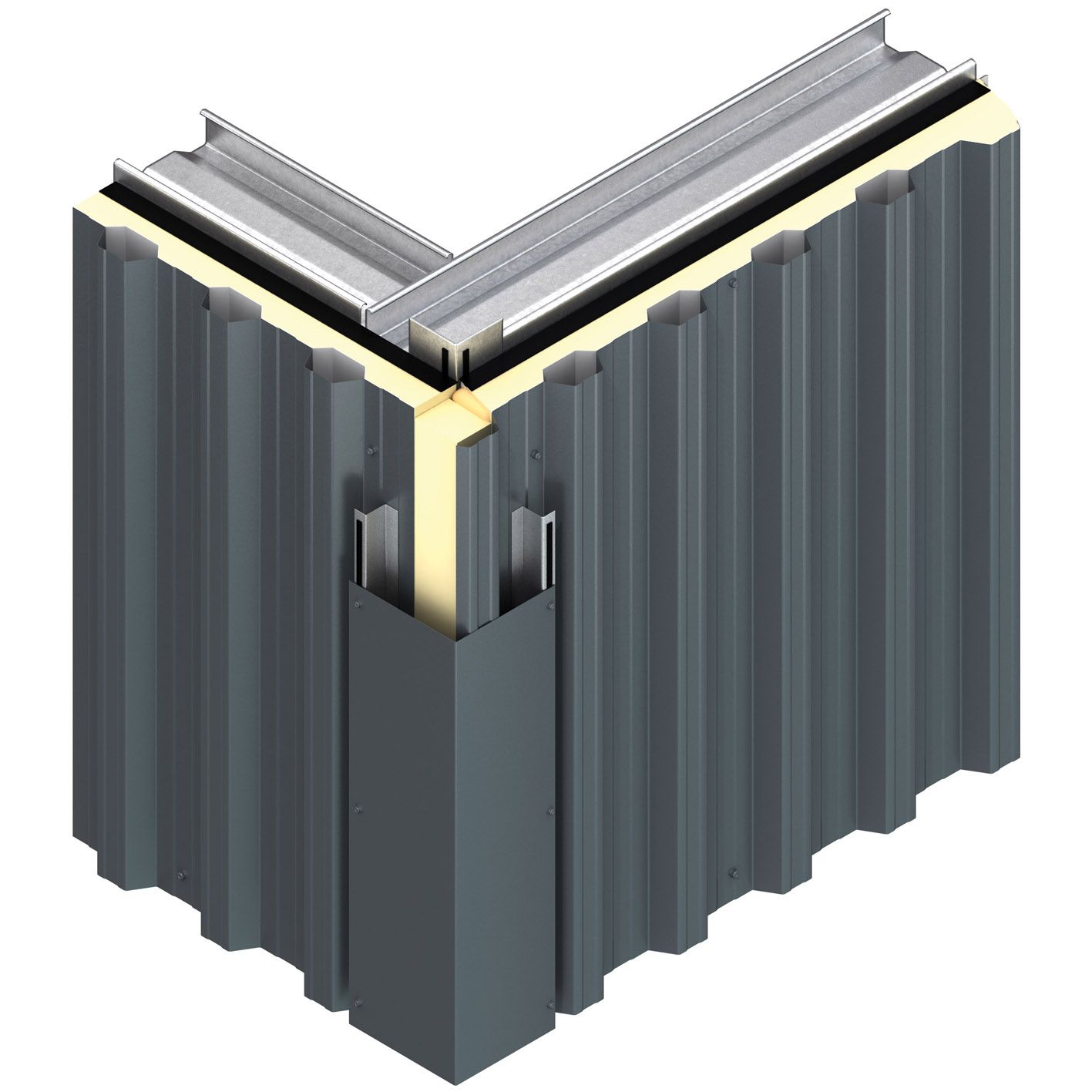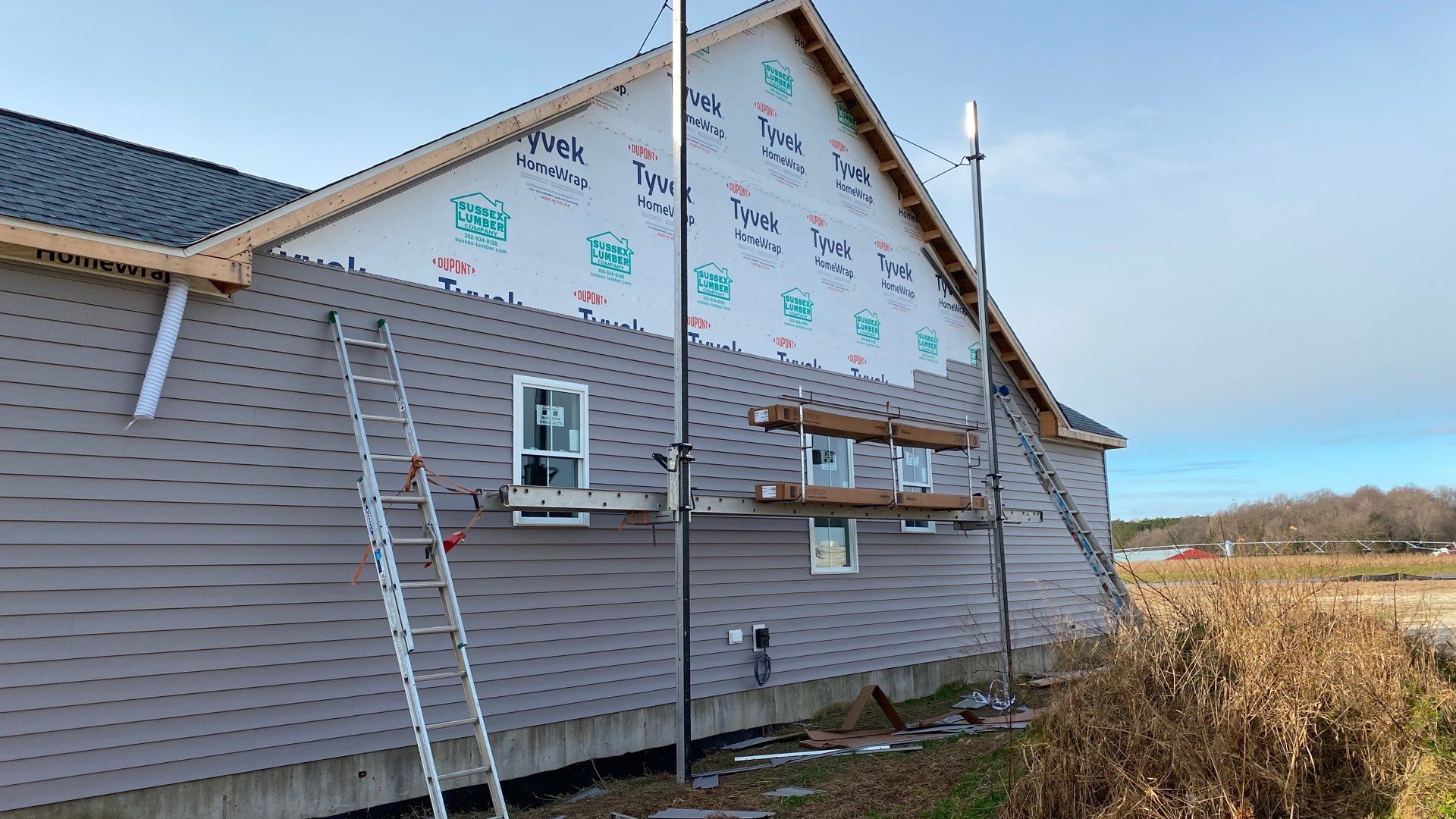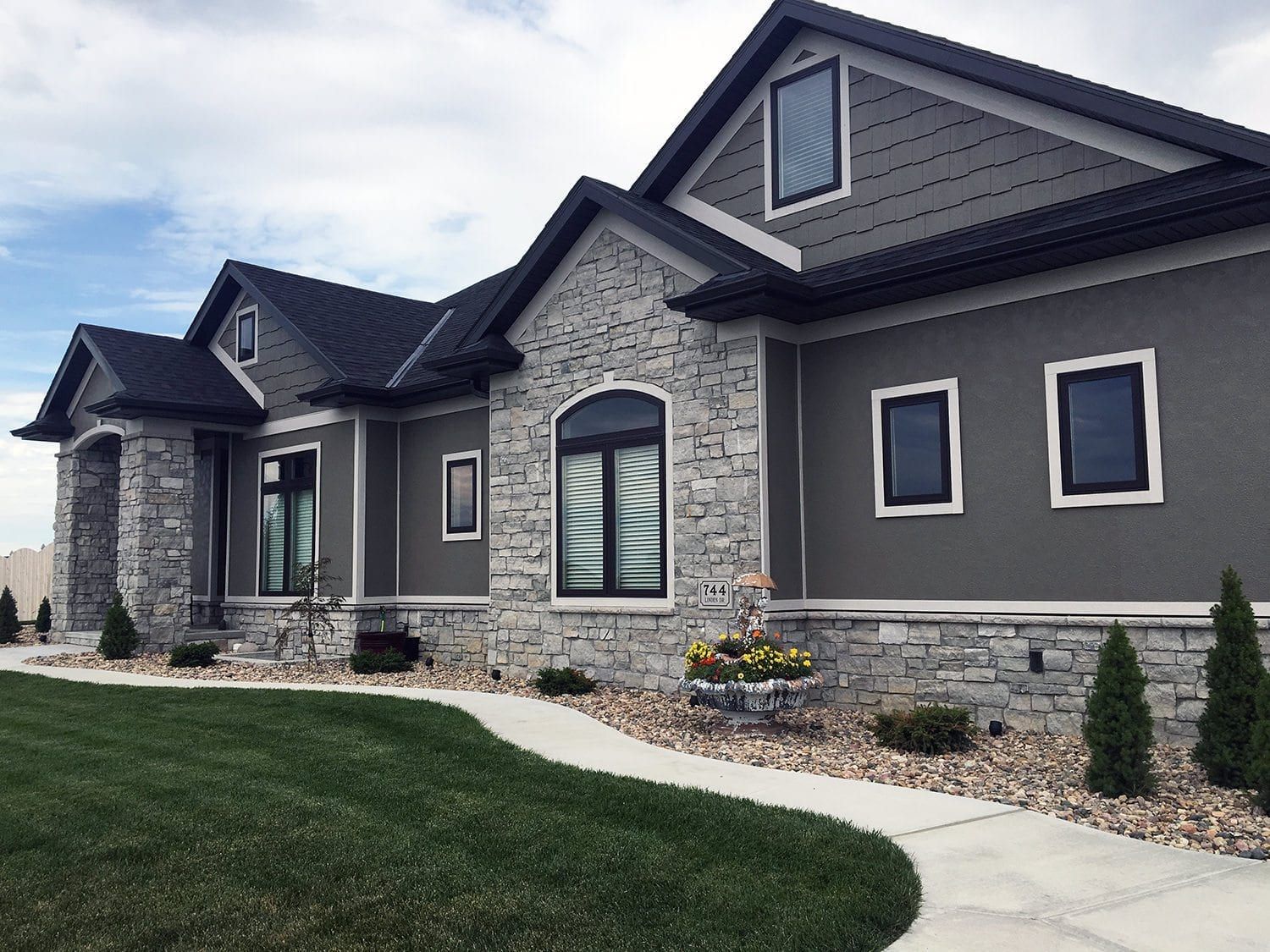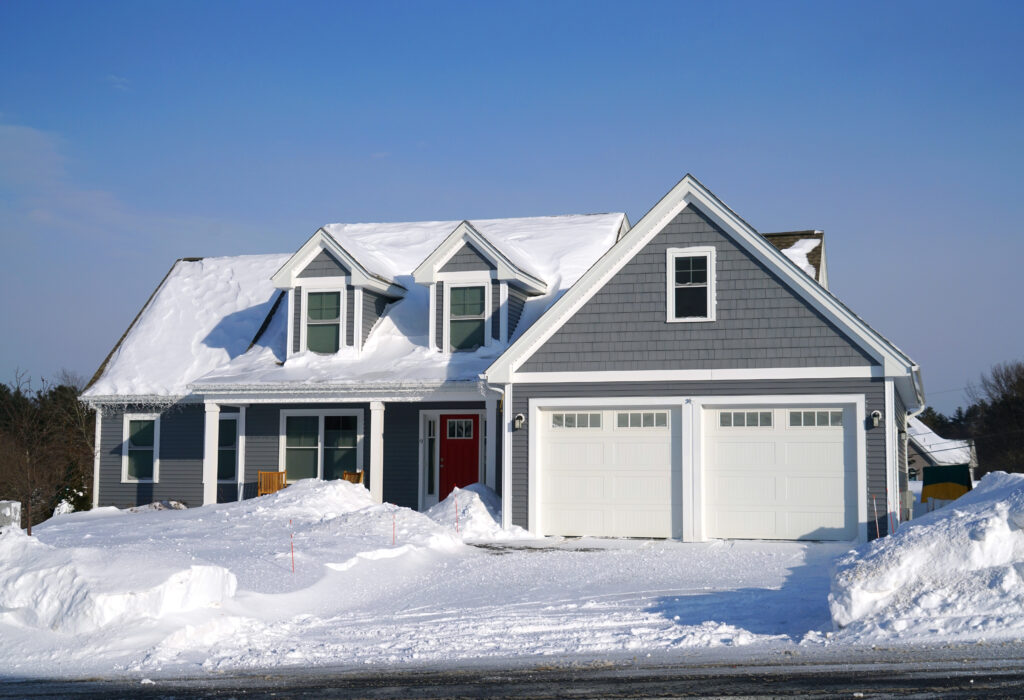Green Insulated Siding Options: A Guide

Green insulated siding options offer a pathway to eco-friendly home improvement, blending energy efficiency with aesthetic appeal. This exploration delves into the various materials, installation methods, and long-term benefits of choosing sustainable siding, ultimately helping you make an informed decision for your home.
From understanding the thermal performance of different materials to navigating cost analyses and maintenance considerations, we’ll guide you through the process of selecting and installing green insulated siding. We’ll also explore the environmental impact, showcasing the positive contribution you can make towards a greener future.
Types of Green Insulated Siding
Choosing green insulated siding is a thoughtful step towards a more sustainable home. It combines the aesthetic appeal of traditional siding with the energy efficiency of insulation, reducing your environmental footprint and lowering energy bills. Several materials offer this eco-conscious solution, each with its own set of advantages and disadvantages.
Green Insulated Siding Materials
Several materials contribute to the creation of environmentally friendly insulated siding. Understanding their composition and manufacturing processes is crucial for making an informed choice. These materials are often combined with other components to create a complete siding system.
Fiber Cement: This material blends cement, cellulose fibers (often recycled wood pulp), and other additives. The manufacturing process involves mixing these ingredients, forming them into panels, and curing them under pressure. The resulting product is durable, fire-resistant, and relatively low in embodied carbon compared to some other options. Different manufacturers may use varying percentages of recycled materials.
Wood Fiber Cement: Similar to fiber cement, but with a higher proportion of wood fibers, often from sustainably managed forests. This increased wood content can slightly lower the material’s strength but improves its insulation properties. Manufacturing is also similar to fiber cement, but the wood fiber addition can influence the final product’s texture and appearance.
Recycled Plastic Siding: Made from recycled plastics such as HDPE (high-density polyethylene) and PVC (polyvinyl chloride). The manufacturing process involves melting and reforming the recycled plastic into siding panels. While offering good insulation and durability, the embodied carbon remains a concern depending on the plastic’s origin and the energy consumed during recycling and reprocessing.
Insulated Vinyl Siding: This combines traditional vinyl siding with a layer of insulating foam. The manufacturing involves extruding vinyl and then bonding it to the foam core. While vinyl itself isn’t inherently “green,” the added insulation reduces energy consumption, mitigating some environmental impact. The use of recycled content in the vinyl can also improve its sustainability profile.
Thermal Performance and Cost Comparison
The R-value, a measure of thermal resistance, directly indicates a material’s insulation effectiveness. Higher R-values mean better insulation and lower energy costs. Cost varies considerably depending on material, installation, and region.
| Material | R-Value (per inch) | Cost (USD per square foot) | Sustainability Features |
|---|---|---|---|
| Fiber Cement | 0.5 – 1.0 (depending on thickness) | $3 – $8 | Durable, fire-resistant, often incorporates recycled materials |
| Wood Fiber Cement | 0.8 – 1.5 (depending on thickness and wood content) | $4 – $9 | Renewable resource (wood), improved insulation |
| Recycled Plastic | 0.7 – 1.2 (depending on thickness and plastic type) | $4 – $7 | Uses recycled materials, durable |
| Insulated Vinyl | 2.0 – 4.0 (depending on foam thickness) | $5 – $12 | Improved insulation compared to standard vinyl, potential for recycled content in vinyl |
Environmental Impact of Green Insulated Siding Materials
The environmental impact of each material considers embodied carbon (the carbon emissions from manufacturing and transportation) and recyclability.
Embodied Carbon: Fiber cement generally has a lower embodied carbon footprint than plastic-based options. The use of recycled materials in any type of siding significantly reduces its environmental impact. Wood fiber cement, while using a renewable resource, still involves manufacturing processes with associated carbon emissions.
Recyclability: Recycled plastic siding offers the highest potential for recyclability, although recycling infrastructure for this material may vary by region. Fiber cement and wood fiber cement have limited recyclability, while insulated vinyl’s recyclability depends on the specific composition and regional recycling programs.
Installation Methods and Considerations
Installing green insulated siding is a straightforward process, but proper technique ensures longevity and efficiency. Understanding the various methods and paying close attention to detail will yield a beautiful and energy-efficient exterior for your home. This section will outline the typical installation process, crucial safety measures, and best practices for a successful project.
Installing green insulated siding involves several key steps, from preparation to finishing touches. The specific process can vary slightly depending on the type of siding and the manufacturer’s instructions, but the fundamental principles remain the same. Careful planning and attention to detail are crucial for a successful installation.
Tool Selection and Safety Precautions
Appropriate tools are essential for a safe and efficient installation. These typically include a measuring tape, level, circular saw, hammer or impact driver (depending on the fastening method), utility knife, safety glasses, work gloves, and a ladder. Safety is paramount. Always wear appropriate personal protective equipment (PPE), including safety glasses and work gloves, to protect yourself from potential hazards such as flying debris or sharp edges. Use a stable ladder and ensure it’s positioned correctly before starting work at heights. Follow all manufacturer’s instructions and local building codes for safe practices.
Best Practices for Insulation and Moisture Prevention
Proper insulation and moisture prevention are critical for the long-term performance of your green insulated siding. These measures significantly impact energy efficiency and the structural integrity of your home.
- Ensure a proper vapor barrier is installed beneath the siding to prevent moisture from entering the wall cavity. This barrier should be installed carefully, overlapping seams and sealing any gaps to create a continuous layer.
- Maintain proper spacing between the siding panels and the underlying structure to allow for air circulation and prevent moisture buildup. Following the manufacturer’s recommendations for spacing is crucial.
- Use caulk or sealant to seal any gaps or cracks around windows, doors, and other penetrations to prevent air and moisture leakage. This creates a tighter, more energy-efficient building envelope.
- Inspect the siding regularly for any signs of damage or deterioration, and address any issues promptly. Early detection and repair can prevent larger, more costly problems down the line.
Comparison of Installation Methods
Several methods exist for installing green insulated siding, each with its own advantages and disadvantages. The choice depends on factors like the type of siding, the substrate, and personal preference.
- Nailing: This traditional method uses nails to secure the siding panels to the underlying structure. It’s relatively straightforward but requires precision to avoid damaging the siding or creating gaps. The nails should be driven straight and at the correct depth to ensure a secure fastening.
- Screwing: Similar to nailing, screwing offers more adjustability and potentially greater holding power. Screws allow for easier removal and repositioning of panels if necessary. However, it’s important to use screws appropriate for the siding material and to avoid over-tightening.
- Adhesive Application: Some green insulated siding options can be installed using construction adhesive. This method is often faster and can provide a very secure bond, particularly in areas with difficult-to-nail substrates. However, proper surface preparation is crucial for a successful adhesive application, and the adhesive must be compatible with both the siding and the substrate. It is important to follow the manufacturer’s instructions for cure time before applying additional layers or finishing touches.
Cost Analysis and Return on Investment
Choosing green insulated siding is a significant investment, but understanding the cost breakdown and potential returns is crucial for making an informed decision. This section will analyze the financial aspects, comparing different options and highlighting potential savings. We will explore both upfront costs and long-term benefits, including energy efficiency improvements and potential government incentives.
Comparative Cost Analysis of Green Insulated Siding
The initial cost of green insulated siding varies significantly depending on the material (e.g., fiber cement, wood, recycled plastic), thickness, installation complexity, and regional labor rates. The following table provides a simplified comparison, acknowledging that actual costs can fluctuate widely based on project specifics.
| Siding Type | Initial Cost (per sq ft, estimate) | Estimated Annual Energy Savings | Payback Period (Years, estimate) | Overall ROI (estimate) |
|---|---|---|---|---|
| Fiber Cement (with insulation) | $8-$15 | $100-$300 | 3-7 | 15-50% |
| Recycled Plastic | $6-$12 | $75-$250 | 4-9 | 10-30% |
| Wood (with insulation) | $7-$14 | $80-$280 | 4-8 | 12-40% |
*Note: These figures are rough estimates and should be verified with local contractors and energy auditors. Actual savings depend on factors such as climate, home size, existing insulation, and energy usage patterns.*
Government Incentives and Rebates
Many governments offer financial incentives to encourage homeowners to adopt energy-efficient practices. These incentives often include tax credits, rebates, or low-interest loans for installing green building materials, including green insulated siding. For example, some municipalities provide rebates based on the R-value of the installed insulation, effectively lowering the upfront cost. It’s crucial to check with your local and state energy agencies or utility companies for available programs. These programs can significantly reduce the initial investment and accelerate the payback period.
Calculating Long-Term Cost Savings
Calculating long-term cost savings involves estimating annual energy savings and comparing them to the initial investment. For instance, if installing green insulated siding costs $10,000 and results in $1,000 in annual energy savings, the payback period is 10 years ($10,000 / $1,000 = 10 years). Beyond the payback period, all subsequent energy savings represent pure profit. This calculation can be refined by factoring in the lifespan of the siding and potential changes in energy prices over time. For example, if energy prices are projected to rise by 3% annually, the long-term savings will be even more substantial. A simple spreadsheet or online ROI calculator can greatly simplify this process. Remember to consider factors like maintenance costs, which are generally lower for durable green siding options.
Maintenance and Lifespan
Investing in green insulated siding is a significant decision, impacting both your home’s aesthetics and its long-term value. Understanding the maintenance requirements and expected lifespan of different materials is crucial for maximizing your investment and ensuring your home remains beautiful and energy-efficient for years to come. Proper care will extend the life of your siding and prevent costly repairs down the road.
Proper maintenance significantly influences the lifespan of your green insulated siding. Different materials require varying levels of attention, and understanding these differences is key to ensuring your siding’s longevity and preserving its attractive appearance. Climatic conditions also play a crucial role in determining the rate of deterioration.
Maintenance Requirements for Different Green Insulated Siding Materials
The maintenance needs vary considerably depending on the specific material chosen. Fiber cement siding, for instance, is relatively low-maintenance, requiring only occasional cleaning to remove dirt and debris. However, wood siding, even sustainably sourced and treated varieties, will require more frequent cleaning and periodic repainting or staining to protect it from the elements and prevent rot. Metal sidings, while durable, may need occasional cleaning to remove rust or oxidation, particularly in coastal areas. Regular inspections for any signs of damage are recommended for all types.
Lifespan of Green Insulated Siding Under Different Climatic Conditions
The lifespan of green insulated siding is significantly influenced by the climate. In milder climates with moderate rainfall and temperature fluctuations, most types of green insulated siding can be expected to last for 20-50 years or more with proper maintenance. For example, a home in California with a Mediterranean climate might see its fiber cement siding last well beyond 30 years. However, in areas with harsh winters, intense sun exposure, or frequent extreme weather events, the lifespan may be shorter. A home in a northern state experiencing heavy snowfall and freezing temperatures might see a shorter lifespan for wood siding, potentially requiring replacement or significant repair after 15-20 years, even with diligent maintenance. Coastal areas, due to the corrosive effects of salt spray, can also lead to reduced lifespan for certain materials.
Cleaning and Repairing Green Insulated Siding
Regular cleaning is essential to maintain the appearance and prolong the life of your green insulated siding. A simple solution of mild detergent and water, applied with a soft brush or sponge, is usually sufficient. Rinse thoroughly with clean water afterwards. For more stubborn stains, consider using a pressure washer, but be careful not to damage the siding by holding the nozzle too close or using excessive pressure. Minor repairs, such as replacing damaged panels, should be addressed promptly to prevent further deterioration. For more extensive repairs, it’s best to consult a professional. A step-by-step guide for minor repairs might include: 1) Identify the damaged area; 2) Carefully remove any loose or damaged siding; 3) Prepare the area for new siding by cleaning and ensuring a proper fit; 4) Install the replacement panel, securing it according to the manufacturer’s instructions; 5) Caulk any gaps or seams to prevent water infiltration.
Aesthetic Considerations and Design Options
Green insulated siding offers a surprisingly versatile palette for enhancing your home’s curb appeal. Beyond its energy-efficient properties, the right green siding can dramatically transform your home’s character, blending seamlessly with existing landscaping or creating a bold, modern statement. Choosing the perfect shade and texture is key to achieving your desired aesthetic.
The visual impact of green siding depends heavily on the chosen shade, texture, and the home’s architectural style. Lighter greens can create a fresh, airy feel, while deeper, richer tones add a sense of sophistication and warmth. Texture plays a significant role too; smooth siding conveys a modern elegance, while textured options can evoke a more rustic or traditional charm.
Green Siding Colors and Textures
The selection of green hues for insulated siding is vast, ranging from pale sage to deep forest green. Consider these options to complement various architectural styles and personal preferences.
- Light Sage Green with Smooth Finish: This subtle shade creates a calming, contemporary look, particularly well-suited for modern or minimalist homes. Imagine a sleek, low-slung ranch house, the light sage siding reflecting sunlight softly.
- Deep Forest Green with Wood Grain Texture: This option offers a rich, natural feel, ideal for homes with traditional or craftsman-style architecture. Picture a charming Victorian home, the deep green siding mimicking the texture of aged wood, enhancing its classic character.
- Olive Green with a Lap Siding Profile: Olive green provides a sophisticated and earthy tone, blending beautifully with natural surroundings. Visualize a Cape Cod style home, the lap siding adding a touch of traditional elegance, the olive green complementing the natural wood tones often associated with this style.
- Emerald Green with a Smooth, Stucco-like Finish: A vibrant emerald green creates a striking, modern statement. This would be a bold choice for a contemporary home, possibly complemented by large windows and clean lines.
Integrating Green Siding into Home Design
Successful integration of green insulated siding involves considering the overall design scheme, including roofing, window frames, landscaping, and even the surrounding neighborhood.
For instance, a home surrounded by lush greenery might benefit from a siding color that blends harmoniously with the natural environment, such as a soft sage or olive green. Conversely, a home in a more urban setting might opt for a bolder shade, like emerald or a deep forest green, to make a stronger visual statement. Complementing the siding with matching or complementary trim colors can further enhance the overall aesthetic. Consider using darker trim colors to create contrast or lighter trim colors to emphasize the siding’s color.
Visual Impact on Different Architectural Styles
The effectiveness of green siding varies across architectural styles.
On a traditional colonial home, a deep forest green or a muted olive green can enhance its classic charm. A modern farmhouse might benefit from a lighter sage green or a subtle grey-green, complementing the clean lines and rustic elements. Contemporary homes can embrace a bolder emerald green or a sophisticated charcoal green, highlighting the building’s modern aesthetic. The key is to choose a shade and texture that enhances, rather than clashes with, the home’s existing architectural features.
Sustainability Certifications and Eco-labels
Choosing green insulated siding involves more than just selecting a product labeled “eco-friendly.” Understanding the certifications and eco-labels behind these claims is crucial for making truly sustainable choices. These certifications provide a third-party verification of a product’s environmental impact, ensuring transparency and accountability.
Choosing sustainable building materials is a significant step towards reducing the environmental footprint of your home. Certifications offer a reliable way to compare different products and make informed decisions based on verifiable environmental performance.
Common Sustainability Certifications and Eco-labels for Insulated Siding
The following table outlines some common sustainability certifications and eco-labels relevant to green insulated siding. Note that specific criteria can vary slightly between certifying bodies and may change over time. Always check the specific certification requirements for the most up-to-date information.
| Certification/Eco-label | Criteria | Examples of Siding Meeting Criteria (Illustrative – Verify with Manufacturers) | Notes |
|---|---|---|---|
| LEED (Leadership in Energy and Environmental Design) | Points awarded for using sustainable building materials with recycled content, low VOC emissions, and responsible sourcing. Specific requirements vary depending on LEED rating system version. | Certain fiber cement and recycled plastic composite sidings might qualify depending on their specific composition and manufacturing process. | LEED is a comprehensive green building rating system, not a specific product certification. Siding contributing to LEED points needs to meet specific criteria. |
| FSC (Forest Stewardship Council) | Certifies that wood used in products comes from responsibly managed forests, promoting sustainable forestry practices. | Wood siding (if applicable) with FSC certification indicates the wood’s origin is from sustainably managed forests. | Relevant only for wood-based siding components; not applicable to all types of insulated siding. |
| GreenGuard Gold Certification | Verifies low chemical emissions from building products, improving indoor air quality. | Some insulated siding manufacturers might obtain GreenGuard Gold certification for their products, demonstrating low VOC emissions. | Focuses on indoor air quality, an important aspect of sustainability but not the sole indicator of environmental impact. |
| ENERGY STAR | Indicates that a product meets energy efficiency standards. For siding, this might relate to its insulation properties and contribution to reduced energy consumption. | Insulated siding with high R-values might qualify, depending on the specific product and ENERGY STAR program requirements. | Primarily focuses on energy efficiency, not the full lifecycle environmental impact. |
Verifying Environmental Claims
It’s essential to critically evaluate environmental claims made by manufacturers. Don’t rely solely on marketing materials; look for verifiable evidence, such as third-party certifications. Manufacturers should be able to provide detailed information about the sourcing of materials, manufacturing processes, and lifecycle assessments of their products.
The Role of Third-Party Certifications
Third-party certifications provide an independent verification of a product’s environmental attributes. These organizations conduct rigorous testing and audits to ensure that manufacturers’ claims are accurate and that products meet specific environmental standards. This impartiality builds trust and allows consumers to make informed decisions based on reliable data. The presence of a recognized certification significantly enhances the credibility of environmental claims.
Concluding Remarks
Investing in green insulated siding is more than just a home improvement; it’s a commitment to sustainability and long-term savings. By understanding the options available, you can make a choice that aligns with your values and enhances your home’s energy efficiency and curb appeal. The journey towards a greener home starts with informed decisions, and we hope this guide has empowered you to take that first step.




